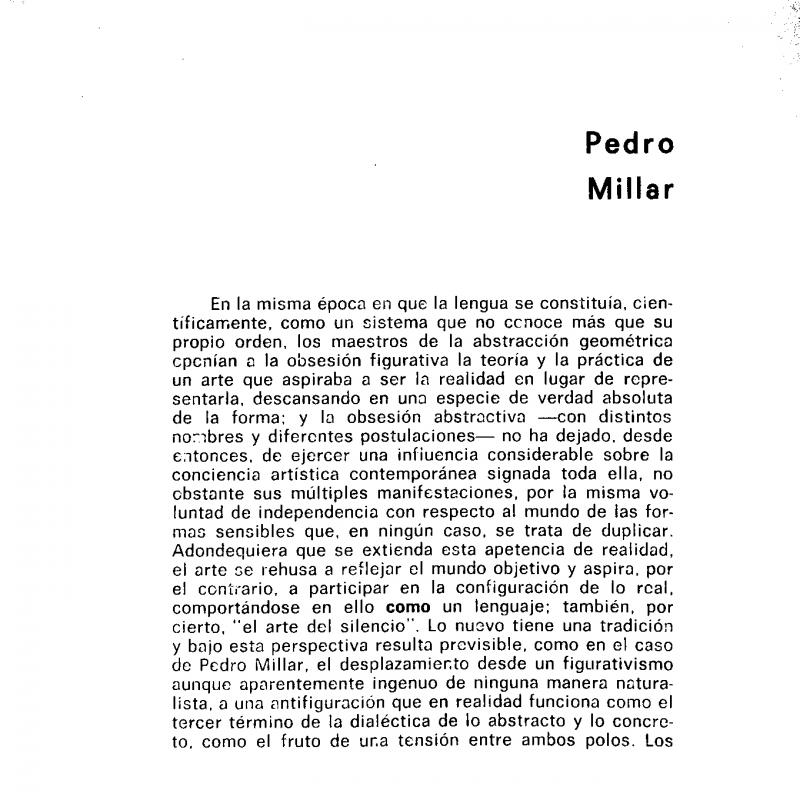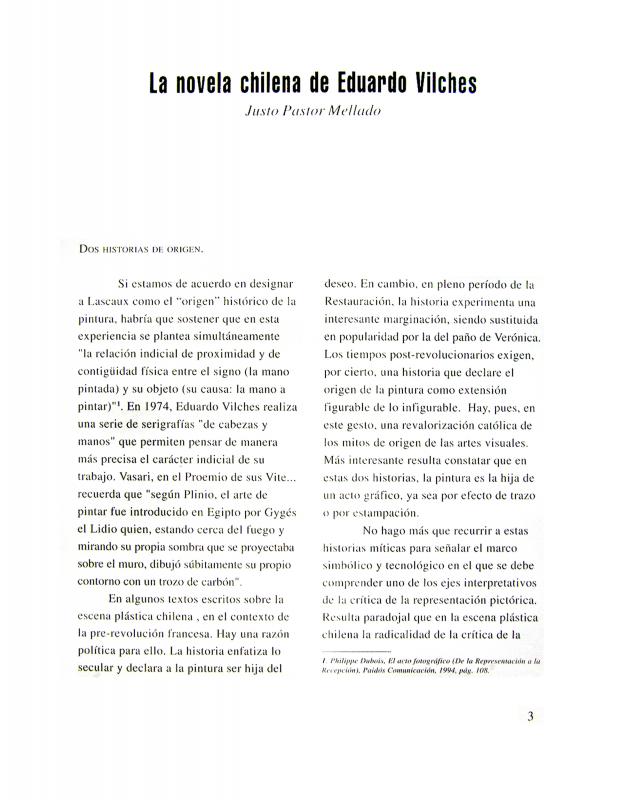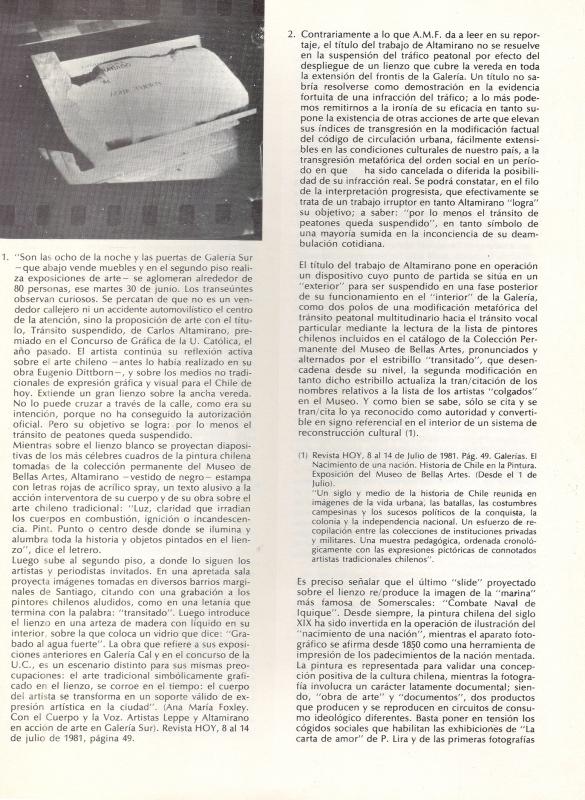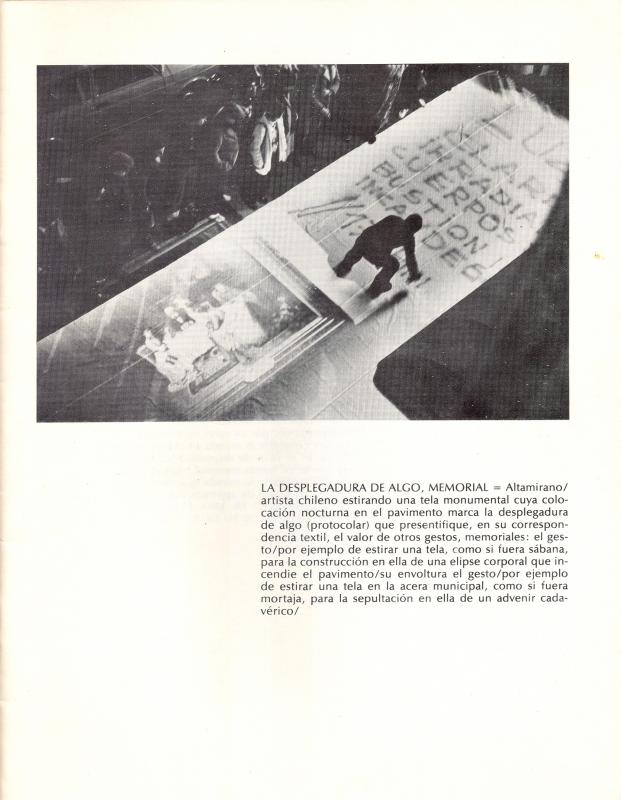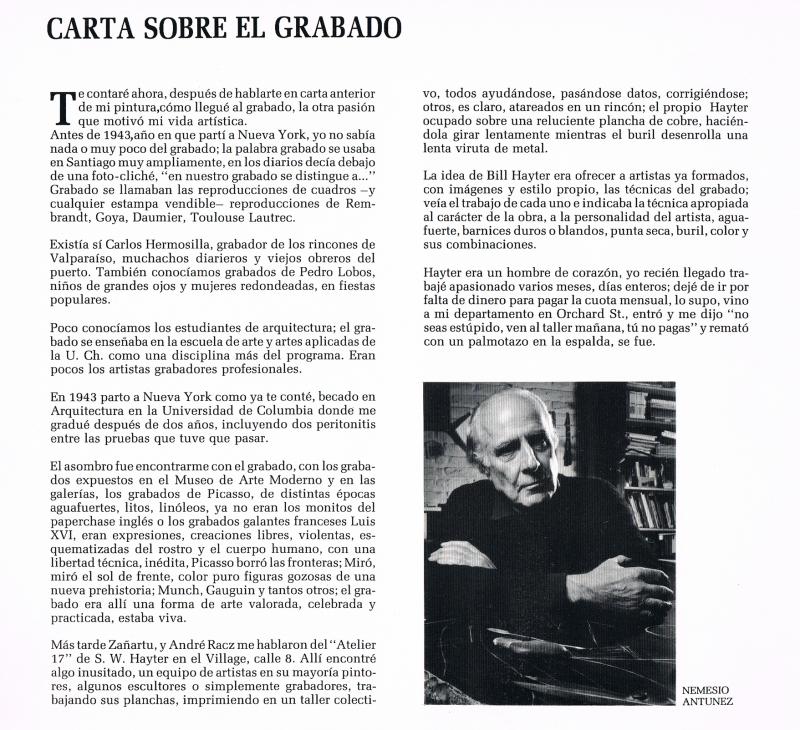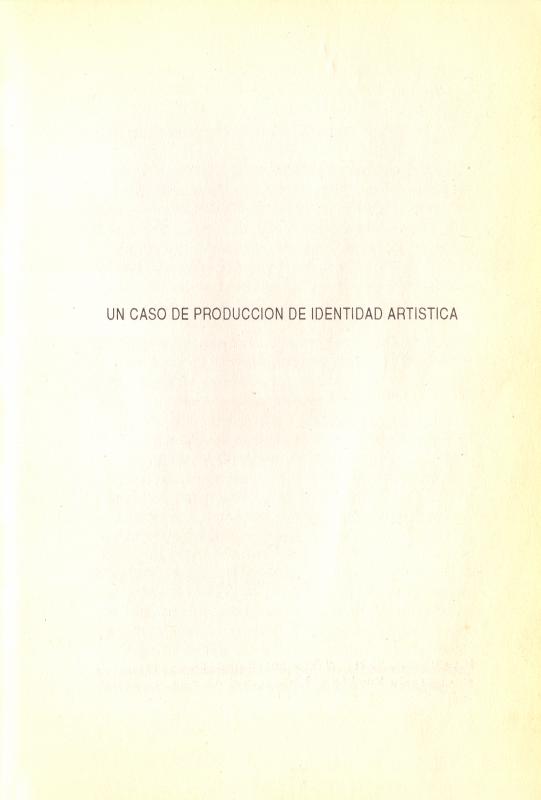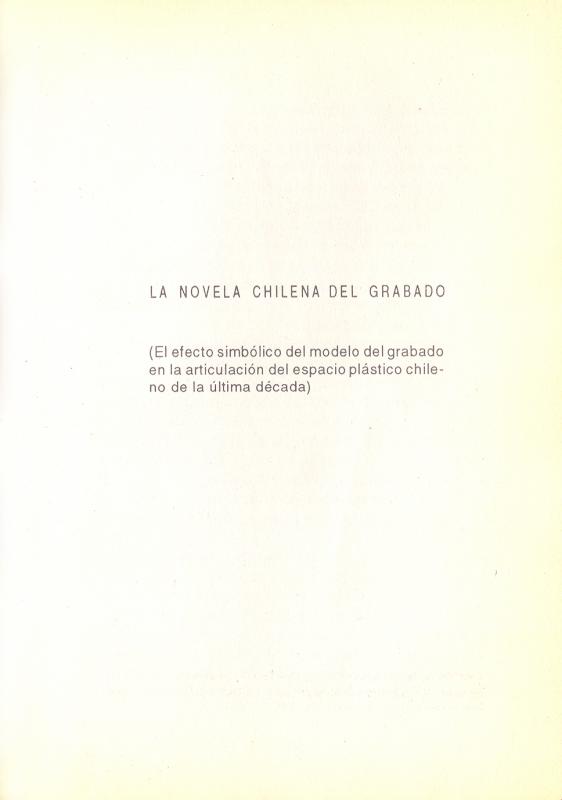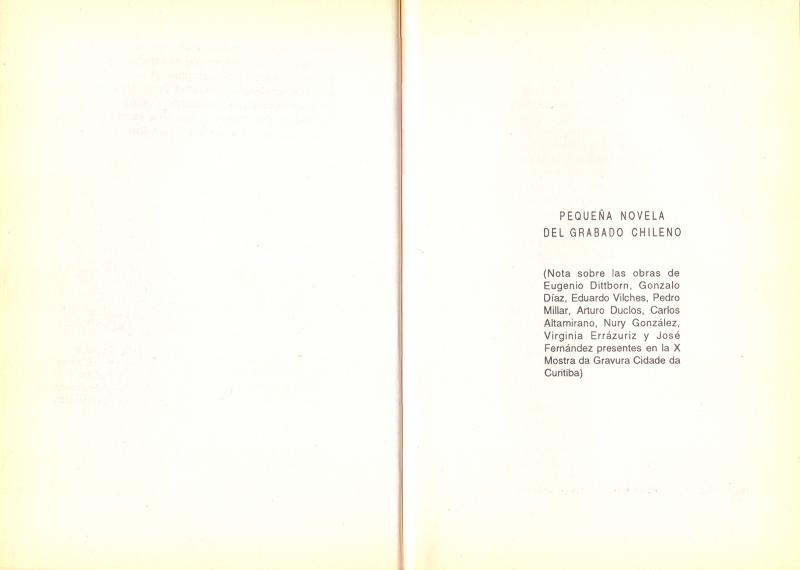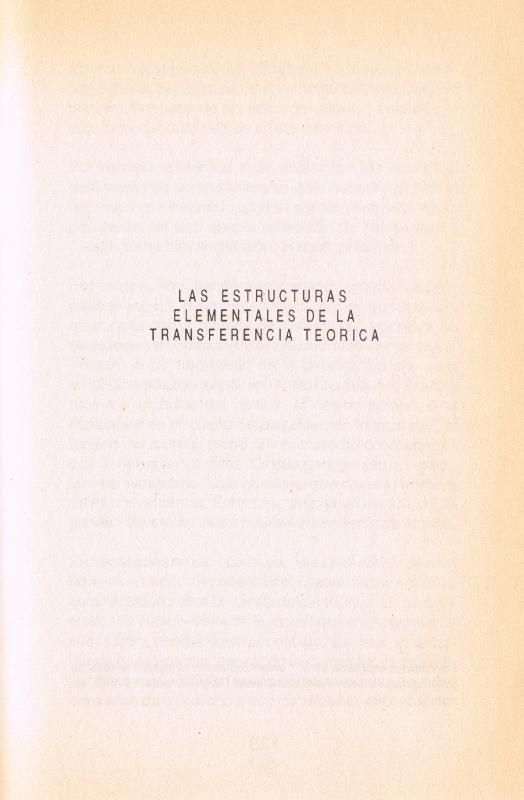This interview with Carlos Altamirano (b. 1954) appeared in the catalogue for the exhibition Cuatro Grabadores Chilenos. The other artists in the show were Luz Donoso (1921–2008), Pedro Millar (1930–2014), and Eduardo Vilches (b. 1932). Altamirano had been the latter’s assistant at the Escuela de Artes de la Pontificia Universidad Católica de Chile. Other contributors to the catalogue were the writer Enrique Lihn (1929–1988), the Argentine art collector and printing specialist Emilio Ellena (1934–2011), the art critic from the newspaper El Mercurio Waldemar Sommer, and the cultural critic Nelly Richard (b. 1948). [For more information on Millar’s work, see the following in the ICAA Digital Archive: “Pedro Millar” (doc. 767093) written by Enrique Lihn and “La novela chilena de Eduardo Vilches” (doc. 740382) by Justo Pastor Mellado.]
Altamirano produced engravings and broadened his range to challenge painting, as reflected in his Versión residual de la historia de la pintura chilena (1980), which appeared in an issue (devoted to Chilean painting) of Icarito, an encyclopedic supplement for school children that was published by a national Chilean newspaper. Altamirano printed washed-out images of paintings with the names of Chilean painters and had himself photographed holding this canvas in various places on the outskirts of Santiago. A year later he used the work as part of his intervention Tránsito suspendido (1981) at the Galería Sur. [See more information about these works in “Texto sobre Tránsito suspendido de Carlos Altamirano” (doc. 731739) by Mellado, and “Texto sobre Tránsito suspendido de Carlos Altamirano” (doc. 731751) by Nelly Richard.]
Printing was an important technique in the evolution of Chilean art. In 1956, Nemesio Antúnez (1918–1993) started the Taller 99, a workshop devoted entirely to experimental work and the development of those techniques. [On this subject, see: “Carta sobre el grabado” (doc. 749419) by Antúnez.] In 1974 Francisco Brugnoli (b. 1935) and Virginia Errázuriz (b. 1941) opened the TAV (Taller de Artes Visuales), a print shop that also functioned as a meeting place for artists during the wave of censorship and murder that Chile experienced under the military dictatorship of General Pinochet (1973–90). Something else to consider regarding this technique is that the curator Justo Pastor Mellado (b. 1949), in his book Novela chilena del grabado [Chilean Novel About Printing] (1995), provided a historiographic account of Chilean art that identified printing as a driving force. [To read the essays in this book, see: “Un caso de producción de identidad artística” (doc. 736039), “La novela chilena del grabado” (doc. 736035), “Pequeña novela del grabado chileno” (doc. 736031), and “Las estructuras elementales de la transferencia” (doc. 736043) by the curator and art critic mentioned above].

